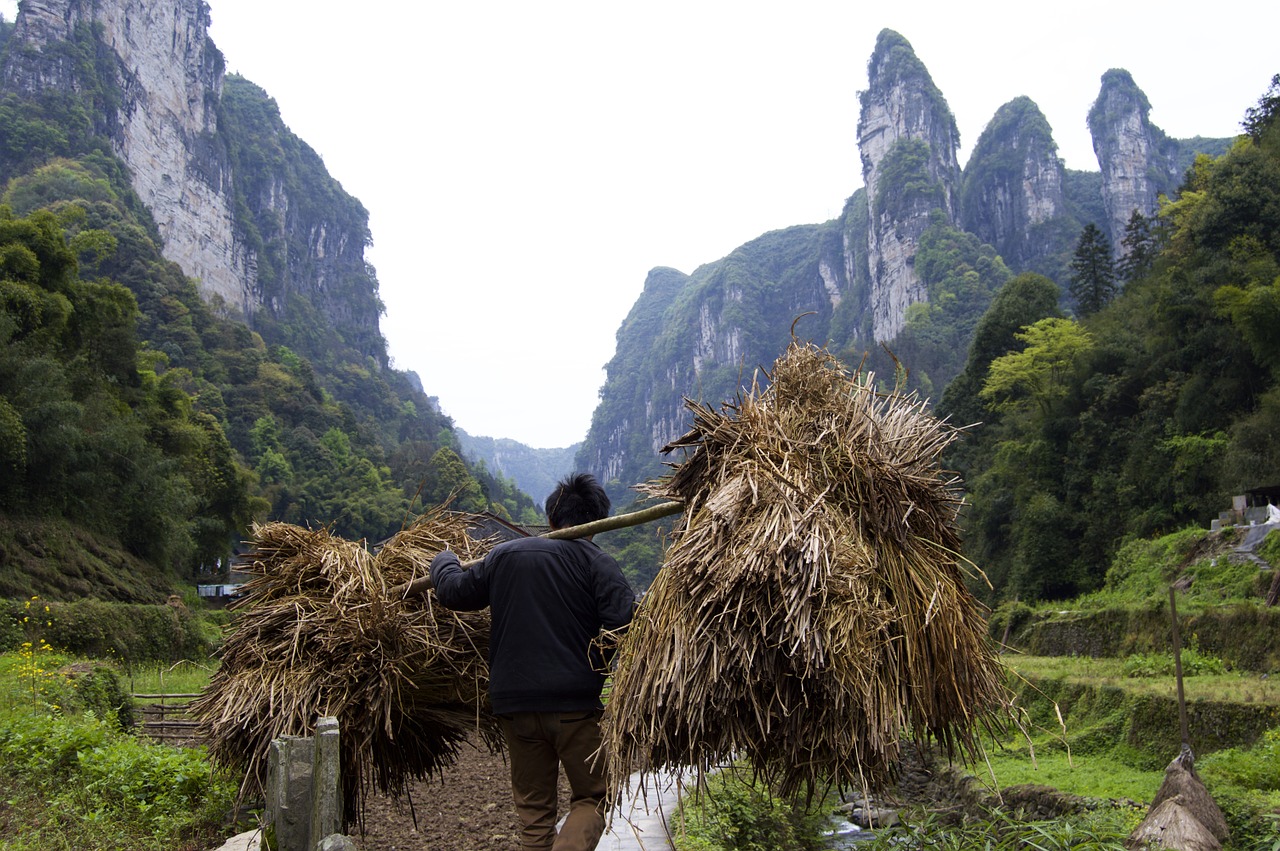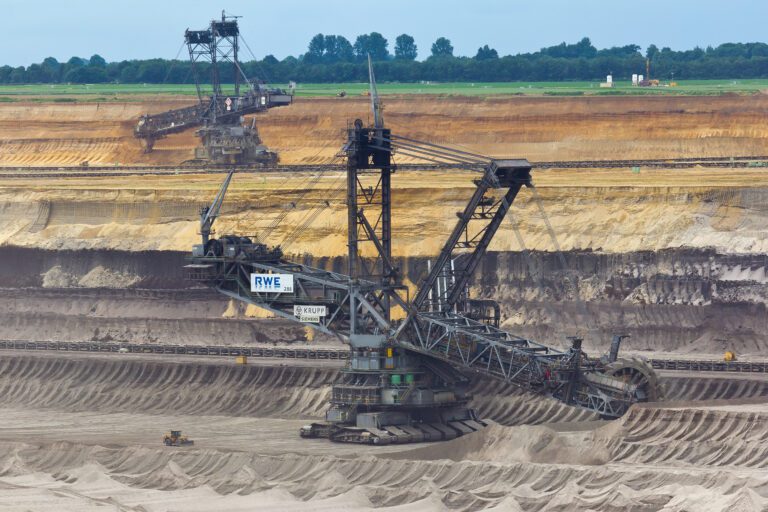
“Go big or go home” appears to be Beijing’s guiding principle in safeguarding China’s food security. Facing mounting pressures to secure food supplies and boost industry competitiveness, China – the world’s largest agricultural producer and importer, as well as a significant food exporter – is betting on a digital revolution to unlock new growth.
On June 10, 2025, seven key government agencies – the Ministry of Industry and Information Technology, Ministry of Human Resources and Social Security, Ministry of Education, People’s Bank of China, State Administration for Market Regulation, National Food Safety Regulation Authority, and National Development and Reform Commission – jointly released the Implementation Plan for the Food Industry Digital Transformation. This ambitious roadmap underscores Beijing’s determination to modernize the food sector.
Building on existing policies, including the 14th Five-Year Plan on Agricultural and Rural Digital Development, the Digital and Intelligent Supply Chain Action Plan, and the National Smart Agriculture Implementation Plan (2024-2028), the new plan spans industries ranging from beverage production, edible oils, meat, and dairy to brewing, canned foods, processed foods, and food bio-manufacturing. It aims to create a digitally driven, high-quality, and globally competitive food industry by embedding advanced technologies such as AI, blockchain, 5G, industrial IoT, cloud computing, and big data into production, supply chains, product design, management, and digital traceability.
The plan also sets ambitious adoption targets: by 2027, 80 percent of key enterprises are expected to achieve digital management integration, with full integration by 2030. Pilot initiatives will include demonstration factories, digital industrial parks, and scenario-specific applications. Core technologies such as AI, blockchain, 5G, and industrial IoT will underpin these developments. Supporting measures include strengthening industry standards, building robust data and network security systems, expanding digital public service platforms, cultivating a skilled talent pool, and ensuring effective monitoring, policy support, and funding to drive this transformation forward.
Food Security Drive and Challenges
China’s new digital implementation plan for the food sector highlights the growing role of technology amid shifting geopolitical dynamics, climate change, trade disruptions, and domestic constraints. Food security and self-sufficiency have long been central to China’s national strategy and remain a top priority under President Xi Jinping. Despite having less than 10 percent of the world’s arable land and an even smaller share of freshwater resources, China produces a quarter of global grain and feeds one-fifth of the world’s population. Historically, famines and food insecurity have fueled social unrest and instability in China, making food security a consistent focus for the leadership.
Since 2013, Beijing has pursued a dual approach: self-sufficiency in staple grains (such as rice and wheat) and key proteins (especially pork), while relying on global markets for non-staple imports like soybeans. Under Xi, significant resources have been directed to strengthening national and provincial food policies, reducing food waste, and safeguarding arable land. Xi has also repeatedly emphasized food as a matter of national security, declaring that the rice bowls of China’s 1.4 billion people “will always be firmly held in their own hands.”
But it is a difficult battle. Domestic agricultural production faces mounting pressures: limited arable land and water resources, soil pollution, environmental degradation, changing dietary patterns, and competing land uses all weigh heavily on output. At the same time, farmers grapple with their net profits decreasing, partly due to rising costs of land rent, agricultural machinery, services, and inputs. Declining fertility rates and rapid urbanization compound these problems, further raising concerns about who will farm China’s fields in the future amid projected increases in consumption of meat, sugar, dairy, and edible oils. The latter is driven by an expanding middle class and increases in disposable income, which are reshaping dietary preferences.
Climate shocks add further strain. Extreme weather events, such as the severe drought that swept across the Yangtze River basin in 2022 – China’s rice heartland – scorched 2.2 million hectares of farmland and killed large numbers of livestock. More recently, drought in Henan during June and July reignited fears of crop failures and declining wheat yields.
Meanwhile, China’s self-sufficiency rate has steadily declined. Once a net food exporter, China became a net importer in 2004. Between 2000 and 2020, food self-sufficiency fell from 93.6 percent to 65.8 percent, while reliance on imports continued to grow. Projections are grim: by the end of 2025, the country may face a food gap of around 130 million tons, including a grain deficit of 25 million tons. Estimates suggest that by 2030, the self-sufficiency rate could fall below 59 percent. By 2050, China’s total food demand is projected to increase by 16 to 30 percent, with demand for meat and dairy products expected to nearly double. Externally, global volatility – from fragile supply chains to global conflicts – adds further urgency to Beijing’s efforts to build a resilient, sustainable food system at home.
Challenges and Implications of the New Policy
The new digitalization plan carries both significant challenges and far-reaching implications for local food production. By embedding digital technologies and tightening supply chain oversight, Beijing hopes to address long-standing concerns about the quality and safety of domestically produced food.
Repeated scandals underscore these concerns: the 2008 melamine-tainted baby formula crisis; 2023 cases of fuel trucks transporting edible oils without proper cleaning and goji berries treated with banned chemicals; and, most recently, an investigation into lead poisoning at a kindergarten in Gansu province that sparked widespread public anger online. These incidents exposed weak enforcement and eroded public trust, demonstrating the need for stronger regulation, food safety checks, and oversight. The plan’s emphasis on digital traceability, blockchain documentation, and IoT-enabled monitoring directly targets such gaps. If implemented effectively, it could strengthen consumer protection, reinforce supply chain integrity, and curb malpractice that fuels social media backlash, public outrage, and consumer distrust.
More broadly, the shift towards automation and smart monitoring may help offset demographic and labor pressures. China’s agricultural workforce, largely made up of smallholder farmers, is aging rapidly: the average farmer is 53, and more than a quarter are over 60. Although about 176.6 million people (24.1 percent of the workforce) were employed in agriculture, fishing, and related industries, projections suggest this could drop to just 3 percent by 2050. The total agricultural labor force may shrink to under 31 million. Stronger digitalization is therefore not only about safer food but also about hedging against a shrinking rural labor pool and sustaining productivity. This demographic shift means China will soon face not only fewer farmers but also fewer rural workers in critical sectors such as transportation and logistics – both essential to maintaining food supply chains.
Numerous hurdles could slow China’s digital transformation in food production. In addition to gaps in data frameworks and privacy concerns, a major challenge is the shortage of skilled digital talent. China’s agricultural sector is dominated by small, scattered family farms that are often reluctant – or unable – to adopt new agricultural technologies and standardized practices. Smallholder farmers, who manage more than 70 percent of China’s farmland, also face limited access to credit and working capital, further deterring investment in modern tools. This fragmented model drags down productivity and slows the uptake of advanced agritech and biotech solutions needed to meet rising food demands.
While investment in new tools is crucial, China must also transition toward larger, more efficient, and tech-enabled farming – a shift still in its infancy and facing cultural and logistical resistance, especially in rural areas. Meanwhile, mounting local government debt casts another shadow. Local governments, once reliant on land sales for revenue, now face plunging income and rising debt burdens – a situation worsened by the real estate crisis. Even with Beijing’s recent 10 trillion-yuan ($1.4 trillion) debt relief package, fiscal strain remains acute. Government debt is projected to reach nearly 150 percent of GDP by 2030, raising doubts about the ability to fund rural infrastructure and farm technology. Without systemic reforms and sustained investment, these overlapping financial, demographic and workforce challenges could undermine China’s agricultural transformation goals.
Looking Ahead
China’s ambitious new digitalization plan signals a bold attempt to modernize agriculture, strengthen food safety, and safeguard national food security amid demographic, environmental, and geopolitical pressures. Yet without systemic reforms, investment in rural infrastructure, and effective adoption among smallholder famers, its success is uncertain. Ultimately, the plan’s effectiveness will depend on integrating digital innovation with human capital, land management, financing, and market mechanisms.
The plan also carries global implications. As the world’s largest agricultural importer and exporter, China’s production, self-sufficiency strategies, and adoption of high-tech farming will affect commodity markets, trade flows, and food prices. Proper implementation could stabilize domestic supply, buffer against international shocks, and reinforce social stability. Failure or partial adoption, however, could exacerbate rural-urban inequalities, undermine trust in food safety, and heighten vulnerability to climate and geopolitical risks. The success of this high-tech push will determine whether China can harness digital innovation to secure its food future and set a global standard for technology-driven agriculture.
Written by
Genevieve Donnellon-May
GenevieveDonnGenevieve Donnellon-May is a Research Fellow at the Yokosuka Council on Asia-Pacific Studies (YCAPS) and a non-resident Vasey Fellow at the Pacific Forum. She is also a Researcher at Oxford Global Society and a Fellow at the Indo-Pacific Studies Center. She sits on the advisory board of Modern Diplomacy and is a Pacific Forum Young Leader. She holds a Masters of Science degree from the University of Oxford and Bachelor of Arts (Hons) from the University of Melbourne.


